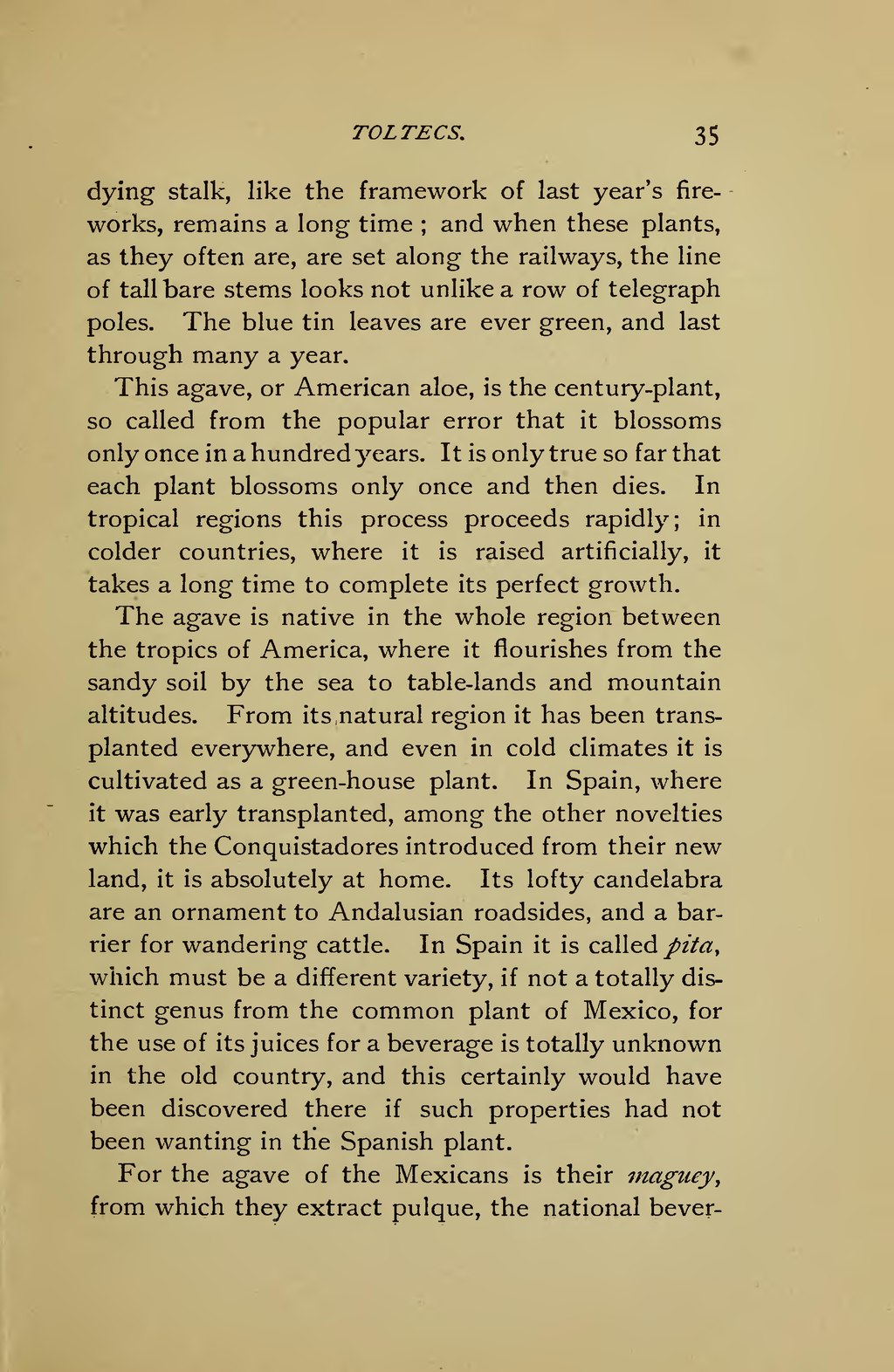dying stalk, like the framework of last year's fireworks, remains a long time; and when these plants, as they often are, are set along the railways, the line of tall bare stems looks not unlike a row of telegraph poles. The blue tin leaves are ever green, and last through many a year.
This agave, or American aloe, is the century-plant, so called from the popular error that it blossoms only once in a hundred years. It is only true so far that each plant blossoms only once and then dies. In tropical regions this process proceeds rapidly; in colder countries, where it is raised artificially, it takes a long time to complete its perfect growth.
The agave is native in the whole region between the tropics of America, where it flourishes from the sandy soil by the sea to table-lands and mountain altitudes. From its, natural region it has been transplanted everywhere, and even in cold climates it is cultivated as a green-house plant. In Spain, where it was early transplanted, among the other novelties which the Conquistadores introduced from their new land, it is absolutely at home. Its lofty candelabra are an ornament to Andalusian roadsides, and a barrier for wandering cattle. In Spain it is called pita, which must be a different variety, if not a totally distinct genus from the common plant of Mexico, for the use of its juices for a beverage is totally unknown in the old country, and this certainly would have been discovered there if such properties had not been wanting in the Spanish plant.
For the agave of the Mexicans is their maguey, from which they extract pulque, the national bever-

